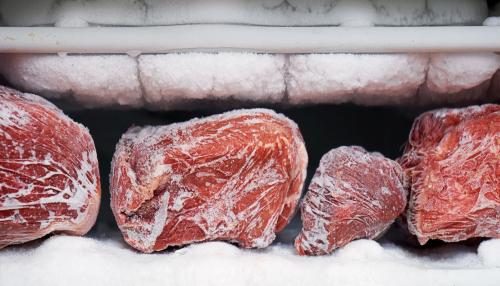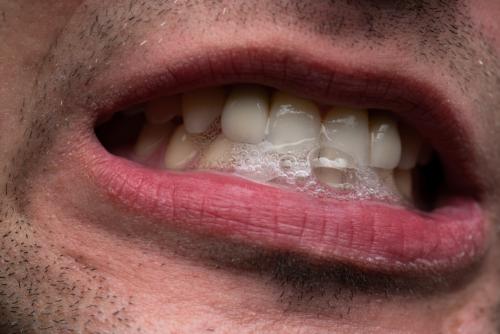Rash (Prurigo): Symptoms, causes, treatment mistakes

Prurigo is a pruritic dermatitis (accompanied by itching) that is clinically manifested by the appearance of papules or vesicles on the skin. Prurigo may be acute, subacute or chronic. Dermatologist Proca Ancuta explains for CSID what are the symptoms, which can be the treatment and where patients are failing in the healing process. The acute prurigo of the child, also known as prurigo strophulus, occurs in children up to the age of 7, predominantly in summer and autumn, with recurrences, and after 8 years of age spontaneously disappears in most cases. The main causes are mites. This condition is clinically manifested by the appearance, in the first phase, of small papules, urticaria, then of vesicles grouped in bouquets.
Rarely, bubbles may be present. The rash is located at the level of the inguinal folds, buttocks, buttocks, pressure zones and uncovered areas. The adult acute pruritus is a pruritic papular-vesicular eruption, with no urticaria papules, which may have various causes (allergic, food, drug, infectious), and etiology remains often undeclared. Subacute Prurigo is commonly found in pregnant women or as a post-medical reaction but sometimes may have an internal cause, may occur in the context of a condition such as diabetes mellitus, chronic renal failure, leukemia or lymphomas. The lesions are polymorphic, evolving towards central hypopigmented atherosclerosis and peripheral hyperpigmentation, excoriations and grinding injuries (scratching scratches).
Chronic Prurigo, also called chronic papular urticaria, affects predominantly women aged 40-60 years. It is clinically manifested by the appearance of urticaria papules, papulo-vesicles and pigmented inflammatory nodules of less than 1 cm in diameter, which are predominantly located on trunk and extremities. When the lesions are pigmented, the disease is called pigment prurigo. Factors that favor this condition Possible causative factors include stress, anxiety, hormonal, digestive disorders, infection outbreaks, the existence of a cancer or other conditions such as: Atopic dermatitis (Prurigo Besnier), discoid eczema (numb), reactive perforation collagenosis . The Hyde nodular prurigo is characterized by the appearance of brown, 1-3 cm in diameter, warty, severely persistent, persistent, chronic evolution localized on limb extension surfaces.
The nodules frequently show erosions and excoriations due to grinding (scratching). It affects both sexes equally, and the onset may occur between 30-60 years. Causes of the disease Causes are not fully elucidated, but it is suspected that the nodules appear as a pathological response due to prolonged pruritus and flossing (itching and scratching). Most patients have a history of atopy. At atopic, the most common disease begins around the age of 19, and these patients are usually reactive to environmental allergens.
In those without atopic conditions, the onset occurs around the age of 50. They do not show hypersensitivity to environmental allergens. Hydride nodular prurigo may also occur in conditions such as renal or hepatic impairment, thyroid disease, cancer, diabetes mellitus, feripritis anemia, psychological factors, celiac disease, insect bites, helicobacter pylori infections, mycobacterial infections, HIV or viruses . Recent research reveals some changes in the skin of the patients with chronic prurigo: In the dermis, Merkel and nerve fibers are numerically elevated Substances involved in the mediation of pruritus and skin inflammation have numerous elevated values with abundant cytoplasm and fewer granulations due to their degranulation . Langerhans cells are more numerous Numerous eosinophils around the nerve threads Interleukina 31 show elevated values Hutchinson's solar or actinic Prurigo affects predominantly the indigenous tribes of North America and Latin American populations, especially in Mexico, Colombia, Perú, Bolivia, Guatemala and Honduras.
There are cases reported to Caucasian populations in England, Ireland, Scotland, France, Germany, Australia) and Asia (Thailand, Singapore, Japan). Genetically predisposed cases are commonly found in indigenous communities (75%); . Clinically, they are in the form of papules and intense pruritic plaques that occur after a few hours or days after exposure to the sun. Lesions can evolve to lichenification. Cutaneous biopsy is usually performed only if a dermatitis is caused by Duhring-Brock herpetiform, an immune-bullous disease, and in these cases a diagnosis of certainty is established on the basis of the histopathological examination.
The treatment consists of the removal of allergens and favoring factors, the treatment of coexisting causative conditions, if any, of antihistamines or tranquilizers, antipruritic mixtures with calamine, dermatocorticoids (creams, lotions or cortisone ointments). In nodular prurigo, patients respond more heavily to treatment. Treatment consists of applications of topical corticosteroids under occlusive dressings, intralesional injections of corticosteroids or general corticosteroids, creams or ointments with menthol, phenol, capsaicin, vitamin D derivatives, topical anesthetics, antihistamines, anxiolytics. Some UVA or UVB phototherapy may work in some patients. Other treatments that can be accessed include liquid nitrogen cryotherapy, pulsed laser laser therapy by reducing vascular lesions, other immunosuppressive drugs (methotrexate, cyclosporine, azathioprine), retinoids, dapsone, thalidomide.
In solar prurigo, besides classical treatment, photoprotection is very important. Treatment Mistakes Prolonged scratching (scratching) exacerbates disease, maintains lesions. Scratching can leave permanent, unsightly scars. Some patients try to autoterapeute with various medications such as vinegar cataplasms (acetic acid) that can cause irritation and make the situation worse, the marigold cream that hydrates the skin and calms it, but does not treat the cause of the pruritus or the strong itching . It is important for the patient to be consulted by a dermatologist in order to be guided by the investigations necessary to elucidate this case but also to receive proper treatment before the disease becomes chronic .
Source : csid.ro
Views : 3418
Popular Article
- (photo) Nude becomes art.
Posted: 2018-03-17, 9599 views.
- The harmful effects of air conditioning on the skin
Posted: 2017-06-08, 8280 views.
- 3 causes of dyed hair discoloration
Posted: 2017-06-15, 8158 views.
- Why early puberty occurs in girls: symptoms, favors, diagnosis and treatment
Posted: 2017-10-24, 8013 views.
- Good or bad skin treatments in the hot season
Posted: 2017-06-07, 7749 views.
Recommendations
- (photo) Nude becomes art.
Posted: 2018-03-17, 9599 views.
- The harmful effects of air conditioning on the skin
Posted: 2017-06-08, 8280 views.
- 3 causes of dyed hair discoloration
Posted: 2017-06-15, 8158 views.
- Good or bad skin treatments in the hot season
Posted: 2017-06-07, 7749 views.
- Risks of practicing sports on hot days
Posted: 2017-06-12, 7346 views.
 4 effective ingredients in the fight against acne.
4 effective ingredients in the fight against acne. How to get rid of hiccups fast
How to get rid of hiccups fast The wheat bran diet: the secret of lost pounds as if by magic
The wheat bran diet: the secret of lost pounds as if by magic The recipe that will sweeten your soul this weekend!
The recipe that will sweeten your soul this weekend!  Is it dangerous or not to refreeze meat after thawing it?
Is it dangerous or not to refreeze meat after thawing it?  The unusual sign of diabetes indicated by saliva.
The unusual sign of diabetes indicated by saliva. What to drink to boost your immune system.
What to drink to boost your immune system. 10 foods that help you never age.
10 foods that help you never age. What actually happens in your body if you drink a cup of coffee for breakfast
What actually happens in your body if you drink a cup of coffee for breakfast 5 surprising benefits of chia seeds
5 surprising benefits of chia seeds